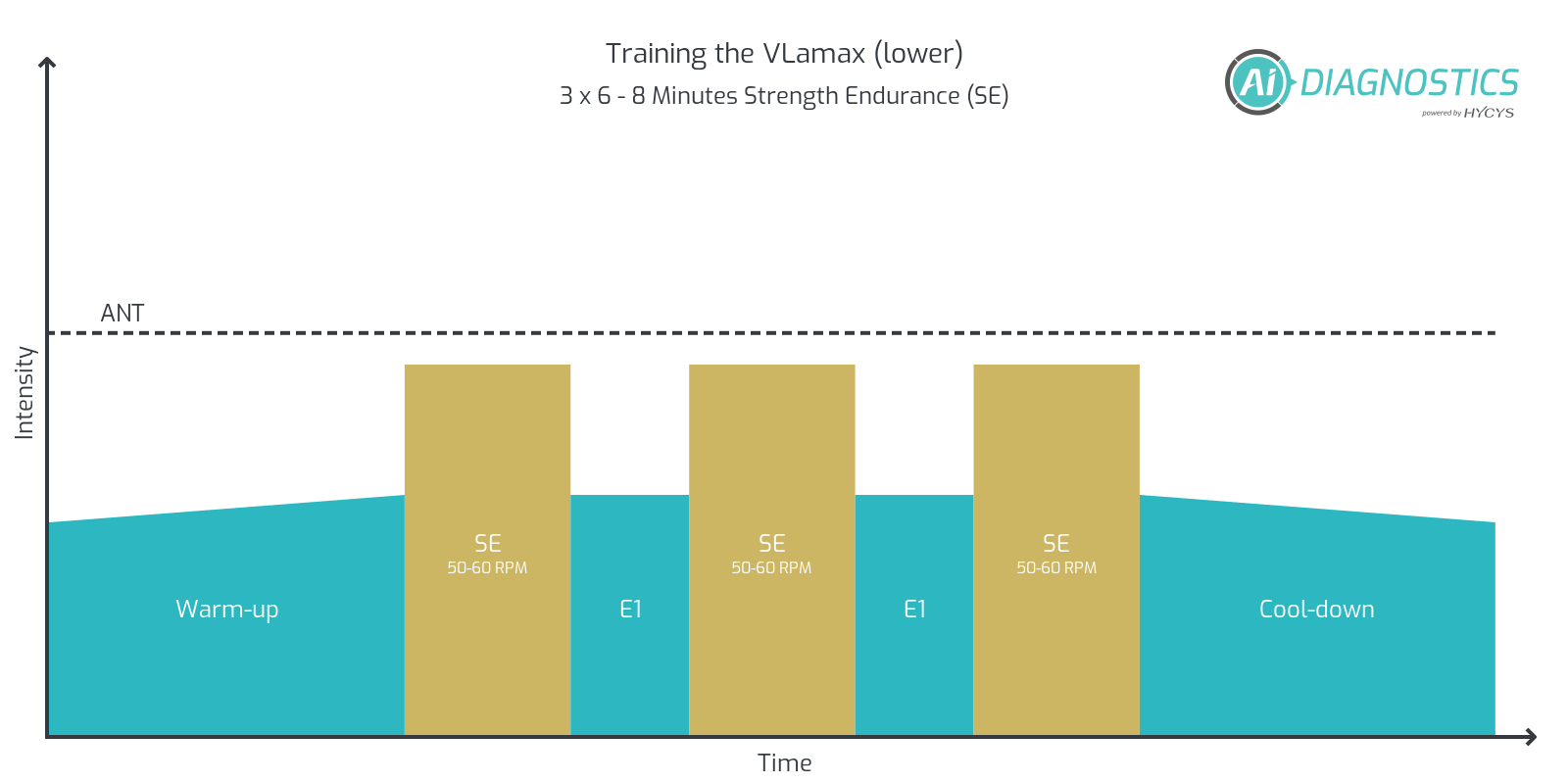Training the VLamax
In contrast to VO2max, where a higher VO2max value always results in better performance, VLamax training is somewhat more complex. It helps to know your VLamax to manage your training effectively. If you know your VLamax, your training zones and your competition requirements, you can plan your training effectively. Significant changes in your VLamax require at least 4 - 8 weeks of consistent training.
Lower VLamax:
- Train in the right training zones and avoid training too easy or too intense
- Increase your training frequency, i.e. train more often and more regularly
- Avoid high-intensity, all-out intervals
- Work with carbohydrate periodization, e.g. low-carb training
Increase VLamax:
- Train with high-intensity, all-out intervals and sprints
- Always make sure you have a sufficient supply of carbohydrates during training, NO low-carb
- Train in the right training zones and avoid training in the medium-intensity zone
- Specific strength training
Training to Lower the Vlamax
6- to 8-Minute high-torque / strength endurance (SE) Intervals

Execution: After the warm-up, ride 3 x 6 - 8 minutes strength endurance (SE) intervals at a cadence of 50 - 60 rpm with active recovery of 4 minutes in the E1-zone. Despite the low cadence, make sure your upper body remains stationary. The intensity should be in the range of 88 - 92 % of your threshold power.
Rate of perceived exertion (RPE): On a scale of 1 to 10, the exertion during the intervals should be rated between 5 and 7.
Nutrition: This session can be done "low-carb", consuming proteins and fats for breakfast to increase the training stimulus. Do not ride "empty" and add approx. 30 - 40g of carbohydrates during training when RPE increases. Replenish your glycogen stores afterwards and make sure you increase your carbohydrate intake.
Progression: The interval duration can be extended to 4 x 8 - 12 minutes.